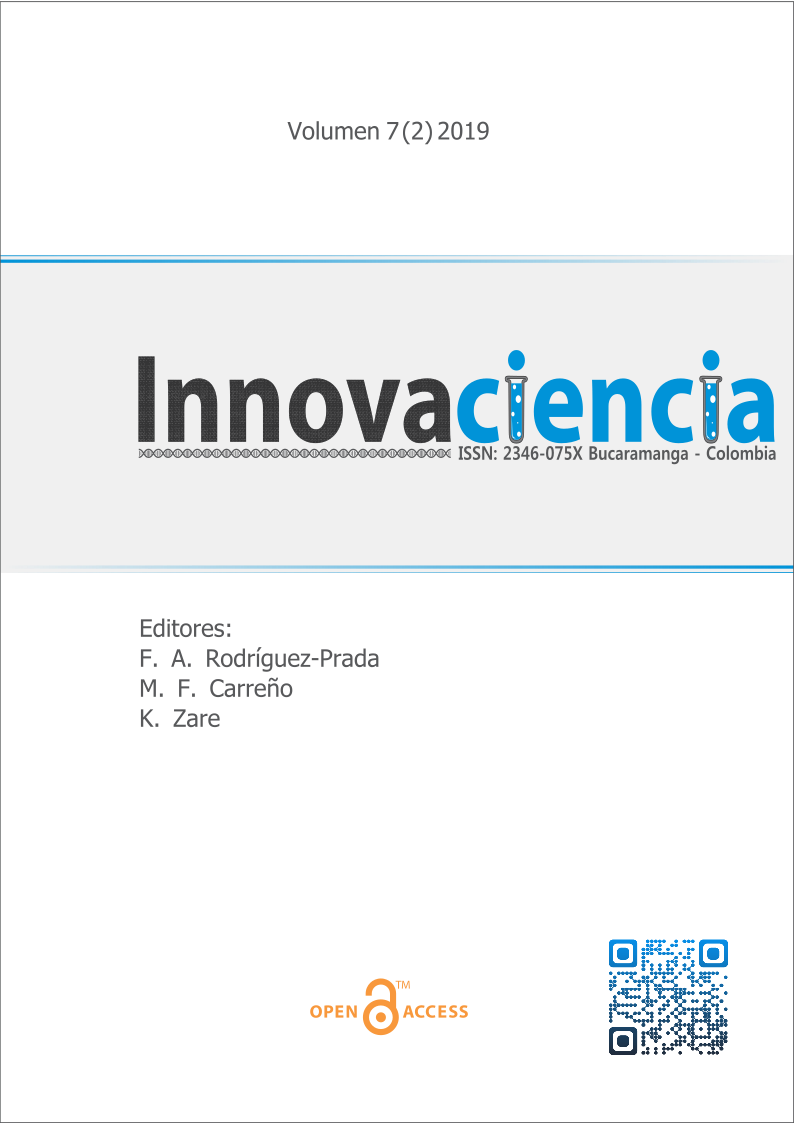Factores de modelado que afectan la elección del teletrabajo y su impacto en la demanda en las redes de transporte
DOI:
https://doi.org/10.15649/2346075X.772Palabras clave:
Teleworking, Transportation Demand, Logistic Regression, Latency, Travel TimeResumen
This research estimates the extent of using teleworking to mean the feasibility and appropriateness of this method of work for employees and professors according to their characteristics and features of career. The study population included university staff and professors in Tehran and data collection was carried out through 447 questionnaires. A logistic regression model was used to investigate the transport demand caused by teleworking. The results showed that various factors including history and percentage of telework and after that, the time delay of home-to-work and trave distance affected the model of transportation demand of professor’s members. For the staffing community, it had the greatest impact on teleworking, history and percentage of telework, followed by travel distances, latency from work to home, and latency from home to work.
Referencias
Zhu, P. (2013). Telecommuting, household commute and location choice. Urban Studies, 50(12), 2441-2459.
https://doi.org/10.1177/0042098012474520
Melo, P. C., & e Silva, J. D. A. (2017). Home telework and household commuting patterns in Great Britain. Transportation Research Part A: Policy and Practice, 103, 1-24.
https://doi.org/10.1016/j.tra.2017.05.011
Salomon, I. (1986). Telecommunications and travel relationships: a review. Transportation Research Part A: General, 20(3), 223-238.
https://doi.org/10.1016/0191-2607(86)90096-8
Botzoris, G., Profillidis, V., & Galanis, A. (2016). Teleworking and sustainable transportation in the era of economic crisis. In 5th International Virtual Conference on Information and Telecommunication Technologies (ICTIC 2016), Žilina, Slovakia.
https://doi.org/10.18638/ictic.2016.5.1.295
Moeckel, R. (2017). Working from Home: Modeling the Impact of Telework on Transportation and Land Use. Transportation Research Procedia, 26, 207-214.
https://doi.org/10.1016/j.trpro.2017.07.021
Lila, P. C., & Anjaneyulu, M. V. L. R. (2017). Networkwide Impact of Telework in Urban Areas: Case Study of Bangalore, India. Journal of Transportation Engineering, Part A: Systems, 143(8), 05017004.
https://doi.org/10.1061/JTEPBS.0000061
Łabędowicz, J., & Urbanek, A. (2017). Do Information and Communications Technologies influence transport demand? An exploratory study in the European Union. Transportation Research Procedia, 25, 2660-2676.
https://doi.org/10.1016/j.trpro.2017.05.156
Elldér, E. (2017). Does telework weaken urban structure-travel relationships?. Journal of Transport and Land Use, 10(1), 187-210.
Ge, J., Polhill, J. G., & Craig, T. P. (2018). Too much of a good thing? Using a spatial agent-based model to evaluate "unconventional" workplace sharing programmes. Journal of Transport Geography, 69, 83-97.
https://doi.org/10.1016/j.jtrangeo.2018.04.005
Zhu, P., Wang, L., Jiang, Y., & Zhou, J. (2018). Metropolitan size and the impacts of telecommuting on personal travel. Transportation, 1-30.
https://doi.org/10.1007/s11116-017-9846-3
Shabanpour, R., Golshani, N., Tayarani, M., Auld, J., & Mohammadian, A. K. (2018). Analysis of telecommuting behavior and impacts on travel demand and the environment. Transportation Research Part D: Transport and Environment, 62, 563-576.
https://doi.org/10.1016/j.trd.2018.04.003
de Abreu e Silva, J., & Melo, P. C. (2018). The Effects of Home-Based Telework on Household Total Travel of One and Two Worker British Households (No. 18-04968).
https://doi.org/10.1016/j.jtrangeo.2018.10.009
Silva, J. D. A., & Melo, P. C. (2018). Home telework, travel behavior, and land-use patterns: A path analysis of British single-worker households. Journal of Transport and Land Use, 11(1).
https://doi.org/10.5198/jtlu.2018.1134
Akbary-Borng, M., Mosavi, A. S., & Azami, M. (2018). Reviewing the Viewpoint of Managers and Librarians of Public Libraries in Kerman Province towards Teleworking: Identifying the Benefits, Obstacles and Ways of Expansion. Research on Information Science and Public Libraries, 23(4), 487-502.
Giovanis, E. (2018). The relationship between teleworking, traffic and air pollution. Atmospheric Pollution Research, 9(1), 1-14.
https://doi.org/10.1016/j.apr.2017.06.004
Suarlan, S. (2018). Teleworking for Indonesian Civil Servants: Problems and Actors. Bisnis & Birokrasi Journal, 24(2).

Descargas
Publicado
Cómo citar
Descargas
Número
Sección
Licencia
Todos los artículos publicados en esta revista científica están protegidos por los derechos de autor. Los autores retienen los derechos de autor y conceden a la revista el derecho de primera publicación con el trabajo simultáneamente licenciado bajo una Licencia Creative Commons Atribución-NoComercial 4.0 Internacional (CC BY-NC 4.0) que permite compartir el trabajo con reconocimiento de autoría y sin fines comerciales.
Los lectores pueden copiar y distribuir el material de este número de la revista para fines no comerciales en cualquier medio, siempre que se cite el trabajo original y se den crédito a los autores y a la revista.
Cualquier uso comercial del material de esta revista está estrictamente prohibido sin el permiso por escrito del titular de los derechos de autor.
Para obtener más información sobre los derechos de autor de la revista y las políticas de acceso abierto, por favor visite nuestro sitio web.















